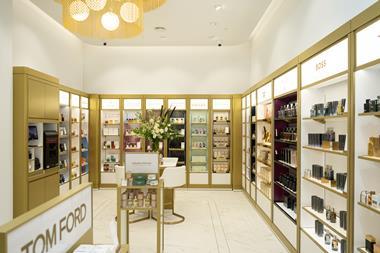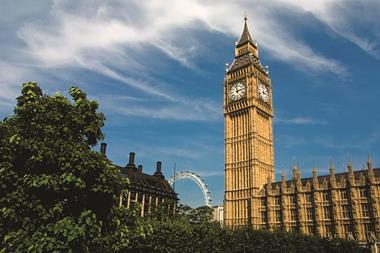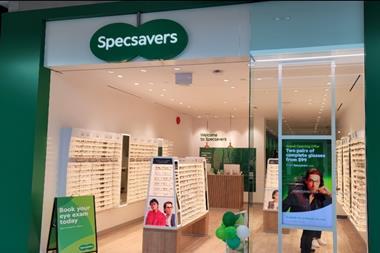Following a visit to the Soviet Union in 1919, US journalist Lincoln Steffens declared: “I’ve seen the future and it works.” Turns out he was wrong about the specifics, at least, and perhaps the lesson to be learned is that predictions about the shape of things to come are notoriously fraught with peril.
Any examination of how shops will appear 20 years from now is, therefore, likely to be substantially incorrect, but this doesn’t make it wrong to try and read the runes, however wide of the mark events prove them to be. If you were to look back at the past 20 years in retailing, there has been a huge amount of change. This has probably had a lot more to do with the forward march of technology than with major alterations in the way that shops themselves appear. Consider, for instance, the branch of Next on the east end of Oxford Street in the late 1980s. It featured an outsize garment conveyor belt as its window display and, at the time, it looked very modern as it carried clothing endlessly on a path across the glassline.
The chances are that were Next to choose to recreate something of the kind today, it would still look pretty contemporary and would force passing shoppers to stop and stare. The changes would probably involve some low-energy lighting and maybe the odd plasma screen or two but, in essence, things would be mostly the same.
This rather puts paid to the notion, popular for a time at the beginning of this century, that the internet would sound the death knell of physical shopping. It hasn’t and, as WGSN store design and visual merchandising editor Amanda Carr says: “There will still be shops, because people still love to shop. They love the interaction with the product and the sense of community that you encounter when you go shopping.”
Tamar Kasriel, managing director of futurology consultancy Futureal, agrees. “Shops may shift slightly [by 2028]. But shops as we understand them have been around for more than 100 years and have been through all sorts of shocks and changes,” she says.
Carr posits a future store where there is a greater emphasis on a store as a community space, one where shoppers will encounter a more personalised experience than is commonly experienced on the high streets of today. “We’ll see a hybridisation of networks, online shopping and physical shopping. It will be a morphing of all of these things,” she says.
Community challenge
Carr cites Asos’s practices as an example of the process that will lead to this. “The way in which they are linking magazine and web site shows what can be done. It draws on a kind of Myspace feeling,” she explains. Ron Pompei, creative director and founder of Pompei AD, the New York-based design consultancy responsible for many of Urban Outfitters’ crop of stores and, in the US, Anthropologie, talks of the three Cs – culture, commerce and community. This trend, he claims, is already emerging, but it has yet to become established in the mainstream.
Shops as community spaces, rather than simply places to buy things, is a recurrent theme among many trend watchers, but technology will, of course, play its part. Almost all pundits are of the opinion that it will have to put on a more human face if it is to enjoy widespread acceptance in retail environments.
Much of what is likely to be on offer in the future will be a mere refinement of existing gadgetry. A glimpse of this can be seen at the recently relocated New Look in Birmingham, which features a “delay mirror”. It is not really a mirror as such: although the device looks like a piece of silvered glass, it is in fact a screen with a camera attached and a three-second delay between what you see and what is happening. It enables shoppers in the fitting rooms to view their backsides without having to twist their necks. There is little that is new about the technology involved, but quite a lot that is different about its application.
There is also the matter of sustainability. Carr says: “We don’t think it will be an issue by then. It won’t be the something that gives a competitive advantage. It will be a given, part of the matrix.”
That said, change in this arena will be apparent, according to Jon Tollitt, principal and creative director at the UK outpost of US architectural and design company Gensler. “One of my big bugbears is packaging and how that has developed. It would be interesting to ask what packaging is actually doing. At the moment, it’s become a communication device rather a means of containing things,” he says.
He believes that, with the present vogue for all things ecological, there will be a push towards packaging only being used for its original purpose and that this, in turn, will have implications for the type of fixturing that we will see in our stores in 20 years’ time. At present, many retailers’ fixtures are designed around product packaging, rather than the products they display. The logic is, strip away the packaging and the shape of the fixtures will change.
Tim Greenhalgh, chief creative officer at design consultancy Fitch, says that one of the outcomes of less packaging may be a future in which shopping is rather less convenient than at present. “If there are no plastic bags and there is less packaging, there may be issues regarding replenishment in stores,” he says.
He adds that if you pursue this line of thinking, shoppers will be faced with stores that will not only be greener in the future, but more overtly green, being forced to be so by the manner in which products are offered.
All of which might still leave the curious wondering about how the shape of buildings will alter. Tollitt says: “One of the things that has worried me for years is the way that leaseholds have exacted a grip on the way that shops appear.” He proposes a future in which retailers will no longer be overly concerned about ground-floor locations. With more flexible lease structures, they may find themselves trading on many different levels within buildings and different elements, such as residential or leisure, will help to break up a space.
This more organic approach to tenancy would have profound effects on the appearance of our high streets. To an extent, something of the kind is already beginning to happen on Regent Street with Crown Estate’s redevelopment of large parts of it. The multi-site landlord is looking at how retailing can be made part of a broader commercial canvas. It has retailers such as Desigual, which trades predominantly from a basement rather than at street level, for instance.
So where does this leave the hapless retailer attempting to decide how a chain of stores can be future-proofed and how shops may develop in the next 20 years? Kasriel says: “If you look at the way that supply chains are presently configured, with a centre of gravity that puts the retailers and their suppliers in the middle of things, we are likely to see things shifting in favour of the consumer.”
Taken alongside some of the other forecasts, this could mean a future in which shoppers end up bartering for unpackaged merchandise. The stock might be supplied by local producers and would be on fixtures that look different from those we are familiar with and everything would be housed within multi-level, mixed-use retail environments... Or maybe this is just Steffens at work once more?


























No comments yet